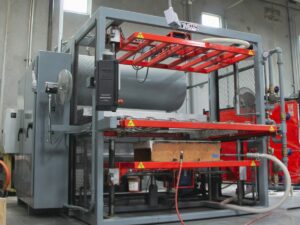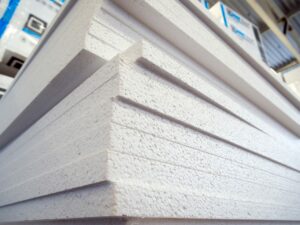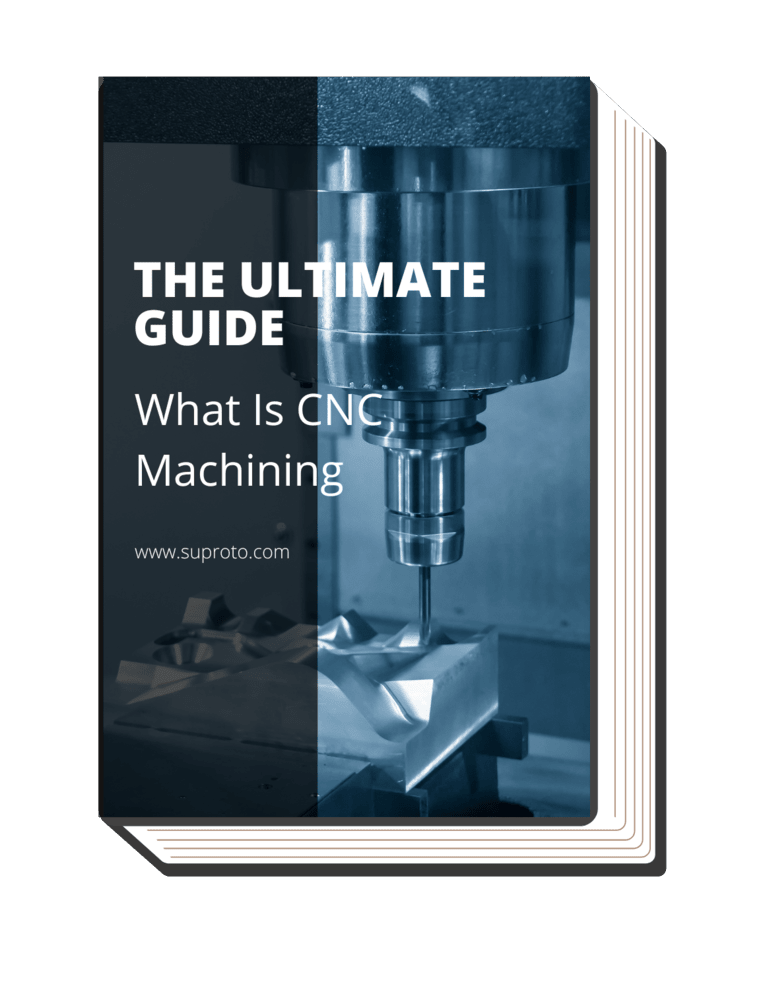Have you ever wondered how complex plastic components, from your coffee cup to automotive parts, come into existence? The answer lies in a revolutionary process: thermoforming. But, as manufacturers face growing demands for cost-effectiveness and sustainability, do they encounter a significant problem-how to adapt thermoforming to meet these challenges?
The good news is that advancements in technology and process optimization promise a bright future for thermoforming, transforming it into a more efficient and sustainable solution. In this article, we’ll dive deep into this fascinating process and explore how it’s shaping the future of the manufacturing industry.
So, without further a do, let’s dive in!
1. Basic Principle of Thermoforming
Thermoforming is a plastic molding process that begins with heating a flat sheet of plastic until it becomes pliable. The heated sheet is then formed into the shape of a specific mold using either a vacuum or air pressure to conform the plastic to the desired shape. Once the newly shaped plastic has been allowed to cool and solidify, the excess material is trimmed, yielding the final product.
Thermoforming is versatile, enabling the creation of a broad range of products with varying complexities, from packaging materials to automotive parts. Personally, I’ve always been fascinated by the adaptability of this process, and how with a simple change in temperature and pressure, we can transform a flat sheet of plastic into incredibly detailed and functional objects.
The table below provides insights into the basic principle of thermoforming, a plastic molding process that involves heating a sheet of plastic and forming it into specific molds using vacuum or air pressure. Explore the versatility of thermoforming and its applications in creating a wide range of products, from packaging materials to automotive parts, highlighting the fascinating transformation of a flat sheet into functional objects.
| Basic Principle of Thermoforming |
Description |
| Heating the Plastic Sheet |
Thermoforming begins with heating a flat sheet of plastic, typically made of materials such as polyethylene (PE), polypropylene (PP), or polystyrene (PS). The heating process softens the plastic, making it pliable and allowing for shaping and forming. The temperature and heating method may vary depending on the specific plastic material being used. |
| Forming the Plastic into a Mold |
Once the plastic sheet is heated and pliable, it is formed into the shape of a specific mold. This is achieved by applying either a vacuum or air pressure to conform the plastic to the contours and details of the mold. The choice of method (vacuum forming or pressure forming) depends on factors such as the desired level of detail, part complexity, and material characteristics. |
| Cooling and Solidifying the Shaped Plastic |
After the plastic has been formed into the desired shape, it is allowed to cool and solidify. This cooling process helps the plastic regain its rigidity and stability, ensuring that the formed shape is retained. The cooling time may vary depending on factors such as the thickness and type of plastic material used. |
| Trimming and Finishing |
Once the plastic has cooled and solidified, the excess material around the formed shape is trimmed off, leaving behind the final product. Trimming can be done manually or using automated processes such as CNC trimming or die cutting. The finishing touches, such as adding surface textures or printing, can also be applied to enhance the appearance and functionality of the thermoformed product. |
| Versatility and Applications |
Thermoforming is a versatile manufacturing process that allows for the production of a wide range of products with varying complexities. It is commonly used to manufacture packaging materials, automotive components, consumer goods, signage, and even medical equipment. The adaptability of thermoforming makes it an attractive choice for creating detailed and functional objects from a flat sheet of plastic. |
2. Advantages of Thermoforming
Thermoforming is an essential method in the manufacturing industry, offering an array of benefits that make it an appealing choice for creating a variety of products. Let’s delve into these advantages:
Cost-Effective
One of the main advantages of thermoforming is its cost-effectiveness. The tooling costs in thermoforming are lower compared to other methods such as injection molding, making it suitable for smaller production runs. It also offers lower per-unit costs when used for large-scale manufacturing. In my service to clients, I often emphasize the cost-effectiveness of thermoforming.
Versatile
Thermoforming is highly versatile, with the ability to mold a variety of thermoplastic materials into complex shapes and sizes. This allows manufacturers to create custom, highly detailed parts for a range of applications. One of the reasons I appreciate thermoforming is its versatility. It opens the door to innovative design possibilities that other manufacturing methods simply can not provide.
Efficient
Thermoforming allows for quick production turnaround times, making it ideal for projects with tight deadlines. It also wastes less material than other methods, as excess plastic can often be recycled for use in other products. Moreover, the use of automation in thermoforming improves accuracy, reduces labor costs, and further enhances its efficiency.
3. Types of Thermoforming
In the thermoforming process, a variety of methods can be used to manipulate plastic into the desired shape. Each method brings its unique properties and benefits. Let’s explore the 3 primary types of thermoforming.
Vacuum Thermoforming
Vacuum thermoforming involves the use of a vacuum to suck the heated plastic sheet into the mold. This process is often used for lower-detail, large parts and it is a cost-effective method for low to medium production volumes. Simplicity and cost-efficiency are the two pillars of this method, making it a go-to for those seeking to balance quality with economics.

Pressure Thermoforming
Pressure thermoforming, unlike vacuum thermoforming, utilizes air pressure to push the heated plastic sheet into the mold. This results in a higher level of detail and finish quality, making it suitable for aesthetic or visible parts. Having worked with this type, I can attest to their distinct advantages and applications. It’s fascinating how slight variations in the process can result in vastly different products

Mechanical Thermoforming
Mechanical thermoforming uses mechanical force to stretch the heated plastic over the mold. A prime example of pressure thermoforming is seen in the production of dash panels for automobiles. This method allows for the production of more intricate shapes and is often used in the automotive industry for parts like dash panels.
4. Materials Used in Thermoforming
Thermoforming is a powerful process used in manufacturing to shape plastic. A significant factor that influences the efficiency of this process is the type of material used. Let’s delve into the characteristics and applications of common materials in thermoforming:
Polystyrene
Polystyrene is a versatile plastic used in various applications due to its lightweight and moldable nature. It exhibits great rigidity and transparency, making it suitable for products requiring visual aesthetics, such as food packaging and lab equipment.
Its resistance to bacterial growth also makes it an excellent choice for applications that demand sanitation. As a specialist in thermoforming, I often recommend polystyrene for applications that require clarity and rigidity.
Polyethylene
Polyethylene is known for its high ductility and impact resistance, making it a good choice for heavy-duty applications. Polyethylene is also chemically resistant to most acids and bases, making it useful in chemical-related industries. In my experience, the adaptability and strength of polyethylene have made it a popular choice for many industrial applications.

Polypropylene
Polypropylene is another widely used plastic in thermoforming. It is recognized for its toughness, resistance to chemicals, and elasticity, allowing it to be used in a variety of products, from car bumpers to plastic containers. For example, the lids of many food storage containers are made of polypropylene because it can flex to create a tight seal but is also tough enough to withstand everyday use.
5. The Process of Thermoforming
Thermoforming is an intriguing and highly functional manufacturing process extensively used in different sectors, such as packaging and technical part production. It allows manufacturers to shape plastic sheets into a variety of forms, catering to the needs of diverse applications. Let’s delve into the key steps involved in the thermoforming process.
Step#1 Pre-Drying
In the initial phase of the thermoforming process, plastic sheets undergo pre-drying to eliminate moisture that could potentially hinder the formation. It prepares the sheet for subsequent steps, ensuring optimal performance during heating and molding. Some materials, like polycarbonate, may require pre-drying more than others to prevent degradation during heating.
Step#2 Heating
According to a study in Science Direct, thermoforming is a high-deformation rate process in which polymeric material is deformed by heating to a temperature above its glass transition. Once the pre-drying stage is completed, the sheets are subjected to heat until they reach a malleable state. This stage softens plastic, making it more pliable and easier to manipulate into the desired shape.
Step#3 Forming
With the plastic sheet properly heated and softened, it’s then stretched over a mold to create the intended shape. This procedure, when performed using Suproto’s state-of-the-art technology, ensures precision and uniformity in every product. Depending on the type of thermoforming used, the shape formation can be assisted by either a vacuum, compressed air, or mechanical stretch aids.
Step#4 Cooling
After the plastic sheet is formed, it is cooled to solidify and maintain the shape created by the mold. This phase is crucial to the stability and durability of the final product. Proper cooling ensures the part retains its shape and structural integrity when removed from the mold. It’s the calm after the heat; a pivotal moment where the masterpiece takes its final form.
Step#5 Trimming
In the final stage of the process, the cooled product is trimmed to remove excess plastic and achieve the final dimensions. In my view, thermoforming is a fascinating process that showcases the true versatility and utility of plastics. Trimming also enhances the appearance and usability of the product, providing a clean and finished look.
6. Applications of Thermoforming
Thermoforming, a versatile manufacturing process that transforms plastic sheets into a multitude of shapes, is used across various industries due to its cost-effectiveness, efficiency, and adaptability. It empowers manufacturers with a flexible solution to meet distinct industry-specific requirements. Let’s explore some of the key applications of thermoforming in different sectors.
Packaging Industry
Thermoforming in the packaging industry, perform flexibility in creating diverse shapes and sizes. This process enables the production of a wide variety of packaging solutions, ranging from food containers to consumer product packaging. In my professional practice, I have seen how thermoforming revolutionizes the packaging industry, providing practical and appealing solutions for various products.
Automotive Industry
The automotive industry leverages the benefits of thermoforming to manufacture high-quality, consistent parts like dashboards, door liners, and other interior components. The process allows for the creation of complex shapes and forms, essential in automotive applications. Additionally, it enables mass production, essential in the automotive industry, where high-volume production is critical for meeting market demands.
Healthcare Industry
Thermoforming allows for the design of intricate shapes and sizes, necessary for medical devices, while maintaining a high degree of accuracy and consistency. Having worked extensively with healthcare sector clients, I can attest to the integral role thermoforming plays in creating precise and hygienic medical products.
7. The Future of Thermoforming
As we progress further into the 21st century, the thermoforming process is poised to adapt and evolve to meet future challenges and opportunities. Its versatility, efficiency, and cost-effectiveness make it a strong contender for future manufacturing innovations. Let’s delve into the potential future trends of thermoforming.
Sustainability
With an increasing global emphasis on sustainability, the future of thermoforming is expected to shift towards more eco-friendly practices. This includes the usage of recyclable thermoplastics and minimizing waste in the production process.
In my work with clients, I have noted an increasing demand for sustainable manufacturing processes, and I believe thermoforming has the potential to meet this need through its ability to utilize recyclable materials.
Technological Advances
The evolution of thermoforming is expected to be driven by technological advancements, such as automation and digitalization, leading to improved efficiency, precision, and versatility. In a study in MDPI, ANN (artificial nueral network) can provide reasonable optimization of the process parameters to yield improved product quality in thermoforming.
As a professional in the field, I am excited about these technological advancements, which I believe will significantly enhance the capabilities of thermoforming and open up new possibilities.
Market Trends
Market trends are expected to play a significant role in the future of thermoforming. As industries seek cost-effective, high-volume manufacturing solutions, the demand for thermoforming services is expected to rise. Furthermore, with consumer preferences leaning towards customized, high-quality products, thermoforming’s flexibility to adapt to these market trends will be a significant asset.
Dive Deeper Into Our Resources
Looking for more diverse service options? Browse through our handpicked selections:
For some insightful reads, we’ve curated a list of recommended articles just for you:
Still haven’t found what you’re looking for? Don’t hesitate to contact us. We’re available around the clock to assist you.
Conclusion
Thermoforming is the potential for adaptation and incorporation of technology, particularly in the realm of Artificial Intelligence and Machine Learning, unlocking new heights in process optimization and product performance prediction.
Are you intrigued by the thermoforming technology and its endless possibilities in manufacturing? Don’t hesitate to
reach out to us to get more insights or inquire about our product offerings. We’d love to take you on a journey to explore the future of manufacturing.
Contact us today to learn more!





